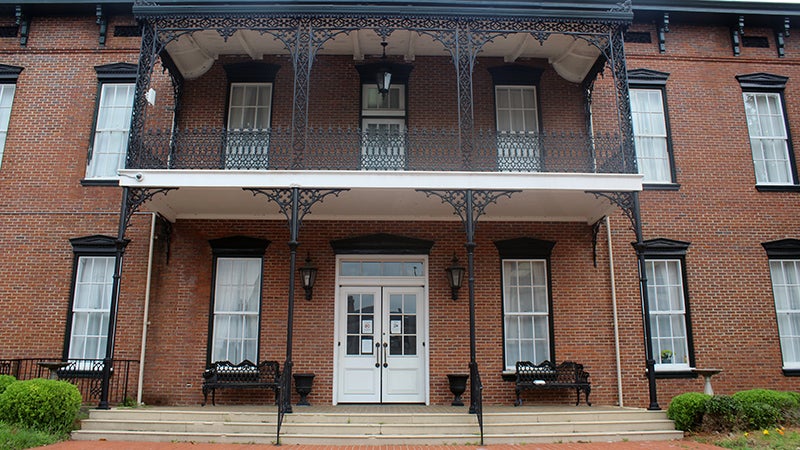Selma City Schools fall short of AYP goals
Published 9:11 pm Monday, August 2, 2010
SELMA — Fingers will not be pointed. Names will not be called.
Instead, every faculty member in the Selma City School system will continue to seek improvements to remedy the issues causing the system to not make the Alabama Yearly Progress report, AYP, from the state Department of Education for the 2010-2011 year.
“We are not going to point a finger at any subgroup simply because that’s not going to accomplish anything,” said Selma City Interim Superintendent Don Jefferson.
The system met 19 of 21 goals, lacking proficiency in reading and math scores for Special Education students in grades three through eight. Special Education students in third through fifth grades were –18.97 percentage points below in reading and –12.97 points below in math. Sixth through eighth grade Special Education students were –22.84 percentage points behind in reading and –12.93 percentage points behind in math.
At the high school level, African-American students scored –5.30 percentage points below in reading, and students receiving free or reduced meals scored –6.88 percentage points below in math.
Last year, the system made AYP. The elementary and middle school levels met 21 out of 21 and 17 out of 17 goals, respectively. Selma High School only met 9 of 13 goals, which increased this year.
Despite the status of the system this year,the graduation rate has improved. Selma High School graduated 86 percent of its students, an increase from 79 percent last year. The high school also increased goals in reading but decreased in math performance. The decreases in Special Education student performance in reading and math, and reading scores of African-American high school students were the only issues of the system for this year.
If one subgroup within any category does not meet the standards, the school or system does not achieve AYP status.
“We’re not going to overreact to a one-year snapshot, but we are going to do what is necessary to make sure those improve,” Jefferson said. “We will look at data from a longitudinal standpoint from the past four or five years and identify our strengths and weaknesses through the data to be able to take a fair step with the curriculum development and to improve in those areas.”
Payne Elementary first grade teacher Alicia Smith is excited her school made AYP status and understands it is a collaborative effort to prepare students in the entire system for the testing and information assessed with AYP.
“The skills that we teach down here are the skills they build as they move to each grade level,” Smith said. “If they can’t read they can’t do science or social studies, so we want the buck to stop down here. If they’re not reading in first grade, then they don’t move on.”
Each school in the system is also assessed by the standards and scored separately.
Two schools within the system, Selma High School and Selma Middle CHAT Academy, did not make AYP.
Selma High School met 10 of 13 requirements, failing to achieve proficiency for all students and the African-American subgroup in reading. Also, students receiving free or reduced meals did not meet the standards in math.
This is the second consecutive year Selma High School did not meet AYP. The school is now placed in “school improvement” status, meaning the school must allocate 20 percent, about $400,000, of the Title 1 budget to improving the school academically.
Selma High School parents and students will receive a letter from the Central Office stating the school’s academic status and inform parents of additional student tutoring services instead of a school choice option.
The No Child Left Behind initiative requires “school improvement” systems to inform parents of the school status and information about transferring between schools in the system. Since Selma City Schools have only one seventh and eighth grade school, CHAT, and one high school, Selma High, students do not have the transfer option in the system.
CHAT met 16 of 17 of the goals. The school did not achieve proficiency goals for Special Education students in reading.
The schools to make AYP are Byrd Elementary School, Cedar Park Elementary School, Clark Elementary School, Sophia P. Kingston Elementary, School of Discovery Genesis Center, Edgewood Elementary School, Knox Elementary School, Meadowview Elementary School and Payne Elementary School.
Results are determined from standardized test scores from assessments such as the Alabama Reading and Math Test, student participation, attendance and graduation rate. If a school does not pass one or more categories, it is placed on a “school improvement” list. A school must pass AYP two consecutive years to be removed from this list.
This standard is part of the No Child Left Behind initiative to have all schools and systems achieve 100 percent of their accountability goals each year in reading, math and other factors such as attendance or dropout rate.
To view the reports, visit the state department’s website (www.alsde.edu) and click on “Accountability Reporting.”




